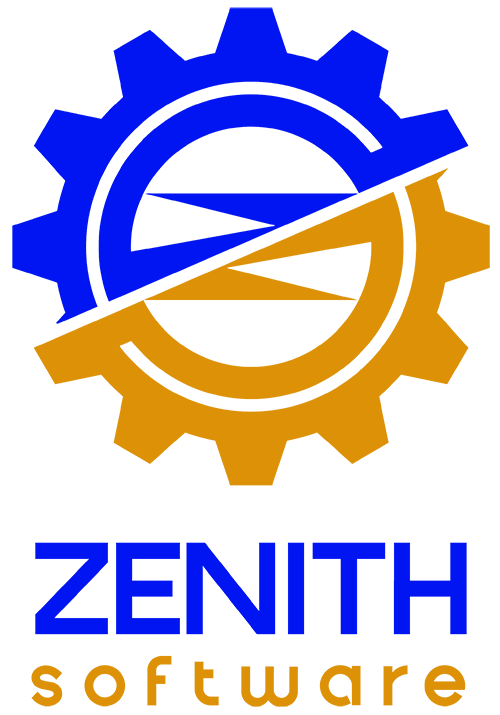CMMS implementations might seem simple at first, but a staggering 70% of implementations fail. Learn how to avoid failure here.

CMMS implementations might seem simple at first glance, but a staggering 70% of implementations fail (and many of them for the same reasons). Organizations believe that using new software is easy, so they forgo a lot of the critical planning and pre-implementation strategies that make CMMS adoption a success.
In this article, we’ll outline seven ways to overcome common CMMS implementation challenges and failure points.
Common CMMS Implementation Challenges
When attempting to implement a CMMS, maintenance teams face several challenges. Some of the most common challenges include the following:
Difficulty of Installing On-Site Software
Many CMMS software consists of complex on-site software. Each stage of the implementation process is handled in-house, from installing the software on your servers to making sure data is migrated over correctly. As updates come out, it will be on you to install those updates using your own time and resources.
Complexity of On-Site Software
The complexity of some on-site CMMS systems can make them difficult for your staff to use, and that makes training more challenging. In some cases, that learning curve can foil deployment. Even with a user-friendly solution, there’s still some training required to make sure the system is used correctly.
On top of that, many of the features included with the software may not even be used, which could decrease the cost-effectiveness of the system. Statistically speaking, only about 6% to 15% of CMMS users utilize their system to its fullest capacity.
Tip: Fortunately, there are user-friendly options to choose from. Choosing a CMMS that’s easy to use can help improve implementation.
Infrastructure Requirements
For a CMMS to be usable, the IT infrastructure in place needs to be able to support it. At times, the IT network may need to be upgraded to support the features the system provides. For instance, many CMMS systems rely on an internet connection for much of their functionality. Without stable internet, the system won’t be as reliable.
Additionally, the intranet—connectivity within the facility—needs to be fast and stable as well. If the system proves sluggish, it can lead to user frustration, and it can ultimately lead to your maintenance team refusing to use it and reverting to older methods.
Change Management
An effective change management process is crucial to CMMS implementation. Adding this software to your process will represent a change in the way your facility goes about its business, and your staff may be resistant to that change. In addition to making sure the technical aspects of CMMS implementation are handled correctly, the changeover process itself needs to be conducted in a way that helps everyone get on board.
Not only does there need to be employee buy-in, but your crew should also be well-informed about new processes, how they will work, and what will be expected of them. If this process isn’t handled well, your maintenance personnel could lose faith in the system and opt for your old maintenance management methods.
Top Areas Where CMMS Implementations Fail
There are several huge ways to mess up a CMMS implementation, and most failed projects suffer from one or more of them.
Planning
Planning is a vital step in the process and one that is so often foregone. A CMMS by itself won’t fix maintenance problems that plague a facility. To implement a CMMS properly (or to even choose the right software), a facility needs to create an action plan that includes:
- What kinds of data do they want to track
- What kind of functionality do they need
- What kind of budget do they have
- Stakeholder approvals and buy-in
Immediately investing in a CMMS without a plan is a massive mistake that can kill a project on arrival.
Implementation
The step with the widest variety of places to fail is in the implementation step. There’s more to this than installing the software and starting work orders. Implementation involves tons of critical factors:
- How is data being migrated from previous systems?
- Is there a preventive maintenance plan designed and ready to be scheduled?
- Has the software been tested in an area before being rolled out to the whole facility?
- Is everyone communicating when things are rolling out?
At this stage, communication, testing, and planning are still super important parts of the CMMS implementation process.
Training
When a new asset comes to a facility, maintenance staff need to be trained on usage and maintenance tasks. The same is true of a CMMS, but facilities continue to overlook this step.
Training should not be a one-time thing either; continuous training is incredibly important, especially if a CMMS receives updates for new features. When an organization skimps on training, maintenance staff won’t know how to use the system that’s supposed to make their jobs easier.
Besides, it’s proven that training increases adoption – don’t let this kill an implementation.
Data
The data collection process can kill a CMMS with ease – if you put in garbage data, you get garbage data out.
Maintenance teams need to understand what kinds of data they need to input. Hands-on training can help with this. If technicians are shown how to populate work orders with useful, quality information, the data you get out will be actionable.
Senior Management Buy-In
Along with the logistics of implementing a CMMS, another cause of failure is a lack of senior management buy-in. Not only do your employees need to believe in the new system, but your executives and other higher-ups need to as well.
Effectively presenting data on how a CMMS can improve the cost-effectiveness of your facility—ultimately reducing overhead—is just the first step in getting executive support. Additionally, you need to make sure that you have realistic deadlines in place for the implementation process. If there are regular delays during implementation, you may lose critical support.
Confusing Tools With Strategies
Another common failing point is when maintenance teams are confused about the purpose of a CMMS. Often, it can be easy to consider a CMMS to be a strategy in and of itself, rather than a tool meant to support maintenance strategies.
To be effective, your software needs to support an existing preventive maintenance process. If that process isn’t in some way present already, then a CMMS will essentially just be a work order program.
Workflows
With a new system comes new processes, and it’s important to make sure your workflows are updated to make the most of your CMMS. Items such as entering work order information, automating routine tasks, and incorporating the system into maintenance planning should be worked into your maintenance processes.
Failing to implement these workflows may lead to your maintenance team abandoning your new software and reverting to less effective processes.
7 Ways to Overcome the Challenges of CMMS Implementation
The above challenges and common causes of failure can be overcome by choosing the right software and taking enough time to plan out the entire implementation process. For implementation, the following tips and best practices can help your maintenance team use your CMMS successfully.
1. Begin Focusing on Proactive Maintenance
Again, without a sound maintenance strategy, your CMMS will be little more than a work order management system. To be truly effective, you’ll need to have a proactive approach to maintenance in your facility.
Note: According to one poll, only about 45% of plants have a proactive maintenance strategy, which may contribute toward the high failure rate of CMMS implementation.
When it comes to switching from a reactive to a proactive strategy, it’s often best to take a gradual approach. Pick a key asset in your facility determine some preventive maintenance tasks you should perform for it, and then start creating recurring work orders. As your team gets used to proactively maintaining that asset, start rolling your preventive maintenance plan out to other assets in your facility. Over time, your facility’s culture should start to shift over to a proactive mindset.
2. Establish Clear Objectives
It’s vital to know what you want to achieve with your CMMS. Some possibilities include:
- Reducing equipment breakdowns.
- Easing the administrative burden of preventive maintenance.
- Supporting predictive maintenance processes.
- Improving MRO inventory management.
- Tracking maintenance data.
Your objectives may include one or more of these, but it’s important to make sure your goals are based on your plant’s needs. In addition, you’ll need plans for how these objectives will happen—keeping the functions of your CMMS of choice in mind—and how to measure success.
When determining what objectives are best for your facility, consult with personnel at all levels, from your technicians up to your maintenance manager. Additionally, people from other departments (IT, operations, etc.) should have some input as well. That way, nothing gets left out of the decision-making process.
Outlining these objectives will help you determine whether implementation is a success or not, and it will also inform what kinds of modules you’ll want to invest in.
3. Get an Implementation Process Together
The process of implementing a CMMS needs to be adequately spelled out, complete with timelines and milestones. Some key points to consider when creating your CMMS implementation plan include:
- How data will be collected and inputted into the system.
- How IT infrastructure will be brought to standard.
- What hardware will be needed to support the CMMS and implementation objectives?
- What workflows your maintenance personnel and other employees will need to follow?
- What shape training will take?
- Who will perform each task?
- When each task will be completed.
It’s important to make sure the whole organization is in on the implementation process, but it also helps to have one person who will spearhead the operation and help bring all other parties together.
4. Train on the Purpose of a CMMS
As you implement your new system, your personnel will need to be trained on how to use it. That means training them on how the CMMS is intended to support a preventive maintenance strategy rather than act as a strategy unto itself. Illustrating the purpose of your software will help head off any misconceptions that may arise concerning its intended usage.
It’s also vital to get employee buy-in. By showing how a CMMS will make their jobs easier, you’ll get the support you need to make sure they use the new software properly.
5. Consult With the Software Provider
The best CMMS providers will offer plenty of support to help you get your new system off the ground. Consulting directly with the vendor can help you determine which features are necessary to support your maintenance goals while also helping with the technical aspects of implementing the software into your existing processes.
Aside from their customer support, most providers offer instructional resources as well, which can be vital during implementation and throughout employee training.
6. Get Buy-In From All Levels
It’s vital to get buy-in from all levels of your facility, from maintenance personnel to high-level executives. Training your employees on the purpose of a CMMS and illustrating how it can improve the workplace can help get employee buy-in while illustrating the potential benefits of the software to senior-level managers and executives can get you the administrative support you need.
Ultimately, senior management provides the funding, while the entry-level staff will use the software—just as long as they believe in it.
7. Use a Mobile CMMS
Finally, an easy-to-use and easy-to-implement software system will make the process much smoother and eliminate many of the obstacles that may impede implementation. Mobile and hosted CMMS systems save much of the hassle that on-premises software often entails, ultimately improving the odds that implementation will be successful.
Conclusion
While the statistics may paint a bleak picture of the success rate for CMMS implementation, research also shows that these systems can vastly improve your maintenance management processes when implemented correctly. By being aware of the general challenges and following best practices, you can make your CMMS a success.




0 Comments